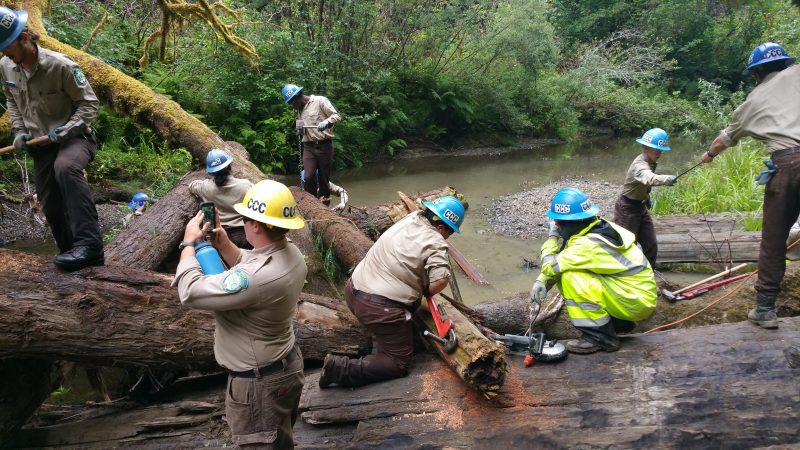Riparian and Watershed Restoration
Since 1980, the Salmon Restoration Program has been the core of the CCC’s work in riparian and watershed restoration.
The Camarillo, San Luis Obispo, Ukiah, and Fortuna fisheries centers serve as a base for much of the work focused on watershed restoration. This work includes instream habitat improvement, invasive species removal, stream-bank stabilization, bio-engineering, habitat and barrier assessment, livestock exclusionary fencing, fish passage barrier removal/modification, and native riparian planting.
CCC Fish Habitat Specialists and Fish Habitat Assistants work with non-profit groups, landowners, and state and federal agencies to develop projects that have measurable benefits to salmonid habitat. CCC Corpsmembers provide the labor force to implement these “Salmon Restoration Projects”.
Typical restoration projects include planting trees in the riparian zones, reducing up-slope sediment sources, stabilizing stream banks through bioengineering and log/ boulder structures, building livestock exclusion fences, constructing in-stream habitat structures for pool development and spawning gravel retention, installing logs and root wads that serve as cover structures in pool and flat water habitats, and modifying barriers to fish passage. Restoration work is focused on streams and watersheds that have the greatest ability to increase threatened and endangered salmonid populations over the long term.
The habitat improvements made enhance and restore California’s salmon and steelhead habitats, improving the productivity of Chinook salmon, coho salmon and steelhead trout streams.
Key Benefits:
- Improved fish runs and protection of the source of more than $17 billion of fish and game related revenue to California
- Watershed data generated, aggregated and shared with landowners and state agencies
- Improvement of more than 1,800 miles of stream and estuary habitat in hundreds of watersheds
- More than two million trees planted
- More than 1.6 million hours of work in streams and tributaries in the Albion, Bear, Eel, Klamath, Mattole, Navarro, Noyo, Russian, Smith and Trinity river watersheds, among others
- Corpsmembers gain skills and experience essential to joining and maintaining a workforce targeting watershed enhancement and protection


